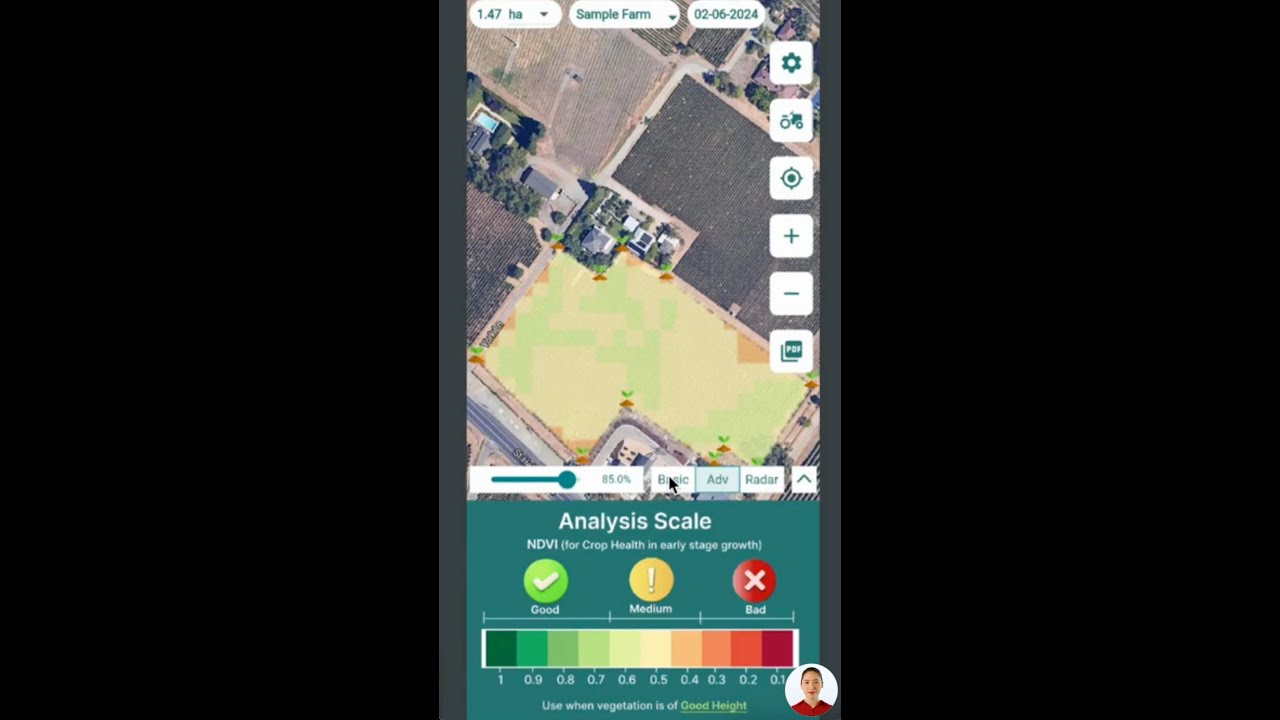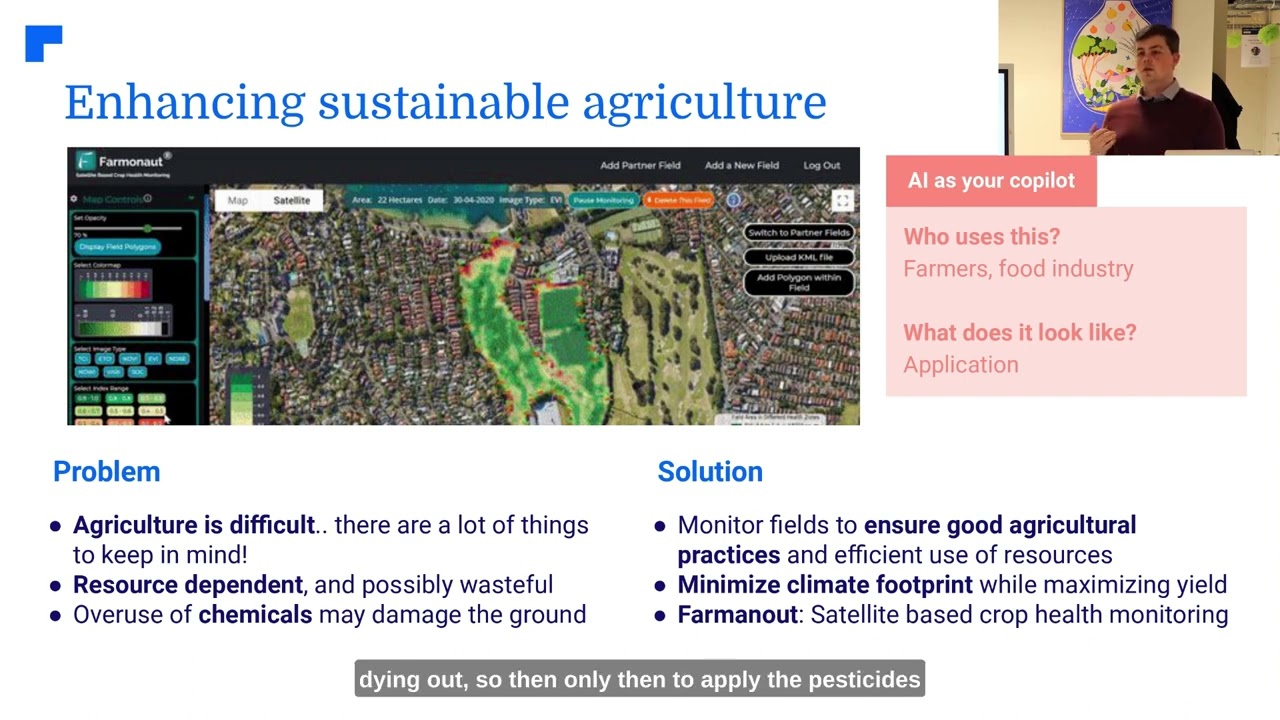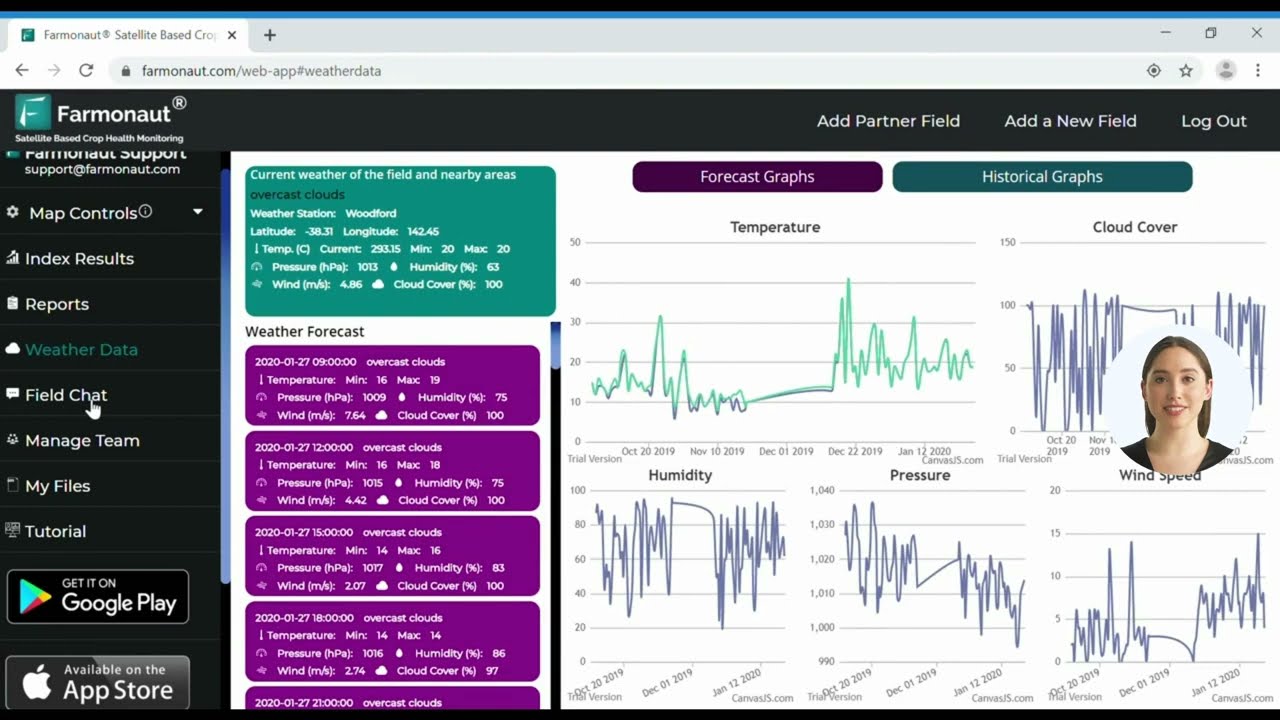“Nepal’s forests cover about 44.74% of its land, supporting over 6,500 plant species and 181 mammal species.”
Sustainable Forest Management: 7 Powerful Benefits for Nepal
Nepal’s breathtaking mountain landscapes and lush green forests are vital to our nation’s identity, economy, cultural values, and environmental health. Yet, they face unprecedented challenges, from deforestation to changing climate patterns and economic pressures. Sustainable forest management (SFM) emerges as both a necessity and a promise of hope—balancing ecological functions, community needs, economic gains, and global sustainability.
In this comprehensive blog, we’ll explore what sustainable forest management means, uncover its guiding principles and approaches, and dive into the 7 powerful benefits of SFM specific to Nepal. We’ll also address the key challenges, offer actionable forest management practices, and see how state-of-the-art technology like Farmonaut empowers greener, more resilient forests.
Defining Sustainable Forest Management: The Foundation for Nepal’s Future
To understand why sustainable forest management is essential, it helps to clarify what it truly means and its scope for Nepal at local and national levels.
According to the Food and Agriculture Organization (FAO), SFM is defined as:
“…the stewardship and use of forest lands in a way and at a rate that maintains their productivity, biodiversity, regeneration capacity, vitality, and their potential to fulfill now and in the future relevant ecological, economic, and social functions at local, national, and global levels and that does not cause damage to other ecosystems.”
(Source)
This definition anchors the way we manage, use, and conserve our forests, emphasizing the need for balance—for us, our communities, and future generations.
The Seven Thematic Elements of SFM
Let’s break down the seven key thematic elements SFM encompasses, which guide evidence-based forest management practices in Nepal:
- Extent of Forest Resources: Monitoring forest area, density, and health to ensure sustainable supply and ecosystem stability.
- Forest Biological Diversity: Protecting the wide variety of species, genetic pools, and ecosystems present in Nepal’s forests.
- Forest Health and Vitality: Maintaining the resilience of forests to diseases, pests, and environmental stresses (such as landslides and droughts).
- Productive Functions of Forest Resources: Sustaining timber, non-timber forest products (NTFPs), and forest services vital for economic and community wellbeing.
- Protective Functions of Forest Resources: Ensuring forests’ crucial role in soil erosion control, water purification, and climate regulation.
- Socio-Economic Functions of Forest Resources: Supporting livelihoods, social equity, and preserving the rich cultural values of Nepal’s communities.
- Legal, Policy, and Institutional Framework: Establishing robust governance structures and enforcement to promote sustainability and community involvement.
Why SFM Is More than Just Protection
SFM isn’t about locking up forests. Rather, it’s a dynamic, multifaceted approach to balancing environmental, economic, and social needs—protecting what is irreplaceable, while empowering communities to use and benefit from forest resources sustainably. This makes SFM the cornerstone for Nepal’s rural prosperity and climate resilience.
Principles of Sustainable Forest Management: A Holistic Approach
To guide sustainable forest management, several core principles ensure we never lose sight of forests’ multiple values and functions. For Nepal, this means adapting our practices to local, national, and global needs:
- Ecological Sustainability: Maintaining forest health, resilience, and capacity for regeneration to support all ecological functions of forests, including water flow, soil fertility, and climate moderation.
- Economic Viability: Ensuring forests provide economic returns—like timber, non-timber products, and eco-tourism—without exhausting their productive potential or causing environmental degradation.
- Social Equity: Recognizing the rights, needs, and traditions of all stakeholders, especially forest-dependent communities, throughout our management approaches.
- Adaptive Management: Flexible decision-making, revising management strategies as conditions, knowledge, and stakeholder requirements change.
How Principles Translate into Sustainable Development
These principles guarantee that forest use in Nepal is both responsible and inclusive, safeguarding ecosystem services such as biodiversity conservation, water regulation, and soil protection, while enabling equitable economic development and preservation of cultural values.
Approaches to Sustainable Forest Management in Nepal
Over the years, a mix of traditional knowledge, modern science, and indigenous practices have inspired several effective approaches to SFM in Nepal. Here are the most impactful methods that help us to sustain forest ecosystem services, enhance productivity, and support local communities.
-
Agroforestry Approaches: By integrating trees with crops and livestock, agroforestry increases functional biodiversity, improves soil health, enhances water retention, and diversifies income sources. This approach also mitigates climate impacts and supports food security.
- In Nepal, agroforestry empowers smallholder farmers to combine traditional farming with sustainable management practices, making agriculture and forests allies, not competitors.
- Learn more about Agroforestry.
-
Community Based Forest Management: Communities are at the heart of Nepal’s SFM success. Through legal frameworks, local forest user groups co-manage resources, leading to enhanced regeneration and more equitable benefit-sharing—critical for poverty reduction and long-term sustainability.
- Nepal’s model is globally recognized as a success story for empowering locals to take stewardship of their forest lands.
- Find out about Community Forestry.
-
Forest Certification Systems: Third-party eco-labels such as FSC (Forest Stewardship Council) independently verify sustainable forest management and product traceability. Forest certification builds consumer trust, supports eco-markets, and incentivizes sustainable harvesting.
- For Nepalese forests and products, certification opens doors to premium international markets for both timber and non-timber products.
- Learn more: Forest Certification
-
Mycoforestry: This ecological approach integrates fungi into forest management. Mycoforestry helps restore soil health, boosts tree regeneration, and provides alternative livelihoods through valuable mushrooms and fungi-based products.
- For Nepal, mycoforestry enhances ecosystem resilience and increases income diversification for marginalized groups.
- Discover more: Mycoforestry
Why Approaches Matter
Each approach is tailored to Nepal’s diverse landscapes, cultures, and climate zones. Together, they reinforce the ecological functions of forests, promote sustainable livelihoods, and demonstrate that economically viable, socially equitable, and climate-resilient forests are possible.
“Community-managed forests in Nepal have increased forest cover by 21% since 1992, boosting local livelihoods and biodiversity.”
7 Powerful Benefits of Sustainable Forest Management for Nepal
Let’s dive deep into the seven transformative benefits of sustainable forest management that are catalyzing a greener future for Nepal—improving both environmental and human wellbeing.
-
1. Biodiversity Conservation
Sustainable forest management protects and restores the rich diversity of species, habitats, and genetic resources across Nepal’s Churia hills, Terai plains, and mountain forests.
- Protecting rare and threatened species (e.g., red panda, snow leopard, rhododendrons)
- Maintaining ecosystem balance by preserving food chains and ecological functions.
- Enhancing resilience to climate impacts and diseases by conserving genetic variation.
-
2. Improved Ecosystem Health
Healthy forests regulate water cycles, purify air, enrich soil fertility, and support countless ecosystem services that benefit both wildlife and people.
- Forest health monitoring detects invasive species, pests, and diseases early, ensuring timely interventions.
- Maintaining forest vitality preserves regenerative capacity and boosts the ecosystem’s ability to withstand drought, landslides, and climate shocks.
- Promoting soil conservation prevents erosion and supports agriculture in Nepal’s hillsides and valleys.
-
3. Soil Protection and Fertility
Forests play a crucial protective role: their roots prevent soil erosion, landslides, and sedimentation in rivers. The leaf litter and fallen branches build organic matter, enhancing soil fertility for sustainable agriculture and forestry.
- Stabilizing fragile slopes in Nepal’s mid-hills, reducing risk of landslides.
- Maintaining productive farmlands downstream by controlling siltation and sediment loads.
- Regulating nutrient cycling to support both forest and agroforestry productivity.
-
4. Climate Regulation and Resilience
Through SFM, Nepalese forests act as natural carbon sinks, storing CO₂, cooling the landscape, and moderating extreme weather. These ecological functions enhance climate change mitigation and adaptation.
- Reducing emissions from deforestation and degradation (REDD+) supports global climate commitments.
- Providing microclimate stabilization for crops, water sources, and settlements.
- Maintaining rain patterns needed for agriculture and hydropower.
-
5. Resource Sustainability—Timber, Fuelwood, and Non-Timber Products
SFM sustains the productivity of forests, ensuring a steady flow of both timber and non-timber products (e.g., medicinal plants, wild fruits, bamboo, honey) for generations.
- Supporting livelihoods and income security for rural populations.
- Preventing over-exploitation through harvest quotas, rotation, and better resource assessment.
- Promoting value addition and eco-labelling through forest certification systems.
-
6. Community Livelihoods and Social Equity
SFM empowers Nepal’s communities to manage, benefit from, and conserve forests, fostering social equity, improved welfare, and cultural preservation.
- Community based forest management leads to more equitable benefit sharing, poverty reduction, and gender empowerment.
- Cultural and recreational values are maintained (e.g., traditional medicines, festivals, sacred groves).
-
7. Disaster Risk Reduction
Forests shield Nepal’s people from natural disasters such as floods, landslides, and soil erosion. SFM enables proactive management to reduce vulnerabilities and safeguard lives and infrastructure.
- Trees buffer riverbanks, stabilize slopes, and filter water, greatly reducing disaster risks in monsoon season.
- Restoration of degraded lands enhances long-term community resilience.
Benefits Comparison: The Seven Benefits of Sustainable Forest Management in Nepal
Below is a comprehensive table summarizing how each of the seven benefits of sustainable forest management specifically impacts Nepal’s ecosystems, communities, and development goals. This format helps us evaluate the diverse advantages at a glance and showcases the country’s unique potential for eco-friendly growth.
| Benefit | Description | Estimated Impact on Ecosystem | Estimated Impact on Communities | Example (Nepal) |
|---|---|---|---|---|
| Biodiversity Conservation | Safeguarding rare plant and animal species; maintaining healthy forest biodiversity | Up to 30% increase in native species richness in managed sites | Improved access to wild foods, ethnomedicines, and cultural heritage | Chitwan National Park: Increased tiger and rhino populations |
| Ecosystem Health | Maintaining forest vitality, resilience, and ecological services | Reduction in major pest outbreaks; improved water and soil quality | Less crop loss from flooding; safer, cleaner water | Hill region reforestation: Fewer landslides during monsoons |
| Soil Protection | Preventing erosion; retaining soil moisture and nutrients | Soil erosion reduced by 1.8–2.5 tons/ha/year in terraced sites | Bigger harvests, stable terraces, reduced hazard risks | Community planting on landslide-prone slopes |
| Climate Regulation | Storing carbon, cooling landscapes, moderating rainfall | Forest carbon stocks increase by ~12% with SFM | Improved water availability and less heatwave stress | Mid-hill forested catchments with cooler local temps |
| Resource Sustainability | Sustaining timber and non-timber production, avoiding resource exhaustion | Continuous regeneration, higher productivity | Household incomes rise (est. $200–600/year) from forest products | Bamboo-based cottage industries in eastern Nepal |
| Community Livelihoods | Empowering participatory decision-making and fair access | More resilient landscapes, balanced resource use | 20%+ increase in household forest-derived incomes (where SFM is active) | Community forest user groups managing local woodlots |
| Disaster Risk Reduction | Reducing floods, landslides, and climate hazards | Fewer disaster triggers, improved protection for wildlife and people | Lowered loss of property and lives after climate shocks | Riparian afforestation along Koshi and Narayani rivers |
Forest Management Practices: Sustaining Benefits for Generations
How do we ensure these benefits are not just theoretical, but felt on the ground in Nepal’s forests, farms, and communities? Here’s a snapshot of sustainable forest management practices and actionable steps for long-term success:
-
Regular Forest Resource Monitoring
- Use satellite imagery and field surveys to monitor forest health, tree cover, species diversity, and assess disturbances.
- Early detection facilitates fast, precise responses to fires, drought, or outbreaks.
-
Agroforestry & Agroecological Integration
- Incorporate trees and perennial species in farmlands to foster soil protection, microclimate regulation, and biodiversity.
- Practice rotation and diversification for resilience.
- Explore resource-saving farm management solutions: Satellite and AI-based farm management tools allow us to get real-time advice on crop health, soil moisture, and sustainable practices.
-
Sustainable Timber Harvesting & NTFP Production
- Follow science-based harvest limits and rotations for timber and fuelwood.
- Integrate non-timber products through value chains for extra incomes.
- Consider using blockchain-based traceability tools to maintain product integrity and market value.
-
Soil and Watershed Conservation Measures
- Create vegetative buffers, restore riparian zones, and protect upper watersheds to prevent soil loss, landslides, and water pollution.
- Utilize innovative mapping solutions (such as carbon footprinting tools) for climate-friendly land management.
-
Participatory Governance
- Involve all stakeholders (especially women and marginalized groups) in decision-making and benefit-sharing.
- Build legal frameworks to empower local forest user groups.
- For large-scale operations, streamlined resource management apps keep activities organized and transparent.
-
Forest Certification Systems Adoption
- Pursue independent verification for sustainable management using well-recognized certification standards to enhance exports and reputation.
- Digital documentation platforms (like Farmonaut’s product traceability tools) simplify compliance and record keeping.
-
Disaster Preparedness and Climate Adaptation
- Map risk zones and prioritize restoration in hazard-prone areas.
- Monitor carbon emissions and sequestration using modern tools (carbon monitoring and reporting).
-
Capacity Building & Knowledge Sharing
- Ongoing training, education, and sharing of best practices are essential for adaptive management.
Challenges of Sustainable Forest Management in Nepal
Despite many positive outcomes, there are significant challenges of sustainable forest management in Nepal, especially as pressures grow from urbanization, climate change, and increasing demand for land and resources:
-
Deforestation and Degradation
- Illegal logging, roadside encroachment, unregulated expansion of agriculture, and weak enforcement all contribute to ongoing forest loss and degraded land.
-
Climate Change Impacts
- Altered rainfall, rising temperatures, shifting species ranges, and more frequent extreme events disrupt forest health and regeneration.
-
Policy and Governance Issues
- Inadequate policy coordination, fragmented land tenure, unclear benefit-sharing rules, and insufficient investment in forest management capacity continue to hinder progress.
-
Short-term Economic Pressures
- Communities reliant on quick cash from land conversion or timber sales may undervalue long-term forest functions and sustainability.
-
Knowledge and Technology Gaps
- Limited access to real-time monitoring, best practices, and digital tools for forest and farm management complicate effective SFM implementation.
- This is where innovative solutions are making a real difference—see the next section!
How Innovative Technology Empowers SFM: Farmonaut’s Role
Emerging technologies are transforming traditional practices of forest management, enabling us to overcome challenges and unlock new benefits for sustainable forests. Here’s how Farmonaut’s suite of satellite, AI, and blockchain-based tools contributes to sustainable forest management for Nepal and the global community:
-
Satellite Monitoring & Real-Time Crop Health Assessment
- With Farmonaut’s app, farmers, agribusinesses, and resource managers can assess vegetation health, soil moisture, and pest outbreaks using up-to-date satellite imagery.
- Benefits: Quicker detection of diseases, illegal encroachments, and forest degradation, enabling timely, targeted action.
-
AI-Based Advisory and Precision Management
- The Jeevn AI Advisory System delivers expert, real-time farm and ecosystem management advice based on satellite data.
- Benefits: Custom recommendations on irrigation, fertilization, pest management, and sustainable practices that optimize crop/forest productivity and minimize waste.
-
Blockchain-Based Traceability Solutions
- Enables transparent and immutable record-keeping from resource harvesting to product delivery—raising confidence in sustainability, safety, and fair trade.
- Use case: Both traceability and satellite-based crop loan/insurance verification benefit farmers and communities.
-
Fleet and Resource Management for Large-Scale Operations
- Farmonaut’s fleet management tools help organize agricultural machinery, vehicles, and team logistics—saving costs and maximizing efficiency for plantation and forest restoration projects.
- Discover more: Fleet management solution
-
Environmental Impact and Carbon Footprint Tracking
- Monitor, visualize, and report on carbon sequestration and GHG emissions for transparency and climate compliance.
- Benefit: Companies and groups get actionable sustainability metrics—see Farmonaut Carbon Footprinting
-
Access and Affordability
- Farmonaut’s app and API make precision agriculture and resource management affordable and accessible for all—from individual farmers to large institutions.
- API access and developer docs encourage seamless integration with existing systems or digital platforms for user-friendly adoption.
Together, these innovations support everything from regenerative agriculture and agroforestry to monitoring reforestation, achieving certification, and building transparent supply chains.
Explore more about Farmonaut’s crop plantation, forest advisory, and precision management solutions here:
Farmonaut Crop Plantation & Forest Advisory
Frequently Asked Questions (FAQ)
What is the main goal of sustainable forest management in Nepal?
The main goal is to balance the ecological, economic, and social functions of forests—ensuring that forests remain healthy, productive, and resilient, while supporting livelihoods and conserving biodiversity for future generations.
How does SFM differ from traditional forest protection?
While traditional approaches often focused solely on preservation, SFM integrates sustainable use with conservation, recognizing the need for forests to deliver ecosystem services, products, and benefits to local communities—all while maintaining long-term health and regeneration capacity.
Why is community participation vital for SFM in Nepal?
Nepal’s success in forest recovery is built upon community based forest management. Engaged communities steward resources wisely, monitor impacts, ensure equitable benefit-sharing, and apply traditional knowledge for lasting sustainability.
How can I monitor forest health or crop growth with technology?
Tools like Farmonaut’s satellite-based app provide real-time data on forest and crop health, soil moisture, and environmental changes. This empowers us to make informed, timely decisions for sustainable landscapes.
What are the best ways to reduce deforestation and degradation?
Combining agroforestry, certified sustainable harvesting, reforestation, and community stewardship offers the most effective pathway. Technology-supported monitoring ensures accountability and early warning, while policy and legal frameworks provide essential support.
Where can I learn more about Farmonaut’s farm management and traceability tools?
Explore Farmonaut’s app for on-the-ground solutions, as well as the blockchain-based product traceability and carbon footprinting features to support sustainable farming and supply chains.
Conclusion: Growing a Greener, Resilient Nepal through Sustainable Forest Management
Nepal stands as a beacon of hope and innovation in sustainable forest management. As we’ve seen, SFM is more than a buzzword—it’s a comprehensive, adaptable, and community-driven approach that protects biodiversity, enhances ecosystem health, boosts rural economies, and builds resilience in the face of climate and development challenges.
By strategically adopting agroforestry approaches, forest certification systems, community-based forest management, and advanced monitoring tools, Nepal can sustain its forests—to the benefit of current and future generations. Technology, including platforms like Farmonaut, empowers us to bridge knowledge gaps, optimize resources, and ensure transparency and traceability.
In conclusion, the benefits of sustainable forests extend far beyond environmental gains. They are the bedrock of national wellbeing, economic opportunity, and global climate leadership. Let’s continue to steward our forest resources with vision, innovation, and unity—for Nepal and the world.
Farmonaut Subscriptions: Empowering Precision Agriculture and Forest Management
Easily access all advanced features through Farmonaut’s flexible, affordable subscriptions—tailored for individual farmers, agribusinesses, government institutions, and research organizations. Make smarter, sustainable decisions for your land and forests today!






















